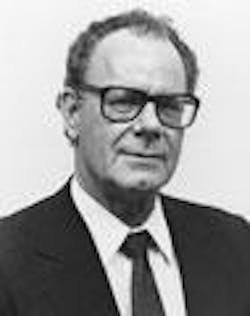
Barely three weeks before the 2005 Nobel Prize in Physics was awarded to three optics and laser scientists (see p. 11), Gordon Gould died at the age of 85 in Lenox Hill Hospital (New York, NY). It’s not hard to imagine that Gould, who fathered the “laser” acronym and received millions of dollars in laser patent royalties, but who never finished his Ph.D. and was overlooked when the Nobel Prize Committee recognized contributors to laser development, is smiling.
Such ironies appear to have been more the rule than the exception in the colorful life story of this inventor, particularly with respect to the laser. Jeff Hecht, a contributing editor at Laser Focus World and author of Beam: the race to make the laser (Oxford 2005), notes that one of the defining events of Gould’s eventual involvement in laser development occurred more than a decade prior to the actual invention. While working at the Manhattan Project during World War II, Gould fell in love with and eventually married a woman with Communist sympathies.
The marriage did not last, but years later, when his employer, TRG, was awarded $1 million by the Department of Defense to develop Gould’s ideas, Gould was prohibited from participating. The Pentagon placed a security classification on the project and refused to give Gould a security clearance because of his Communist past, which as Hecht points out, “hobbled the project.”
Gould came up with the idea of a resonator to enhance coherent amplification of light, as well as ways to excite laser media, including optical pumping and electrical discharge in gas; but the U.S. patent office denied his 1959 patent application. After a 30-year patent battle-during which he signed away 80% of his rights to pay legal expenses but was finally granted patents-Gould became a multimillionaire as royalties from the laser industry began to flow in. Ironically, the payments would have been much smaller if Gould’s claims had been recognized earlier, particularly before lasers began to take on such a ubiquitous role in consumer-related items.
About the Author
Hassaun A. Jones-Bey
Senior Editor and Freelance Writer
Hassaun A. Jones-Bey was a senior editor and then freelance writer for Laser Focus World.